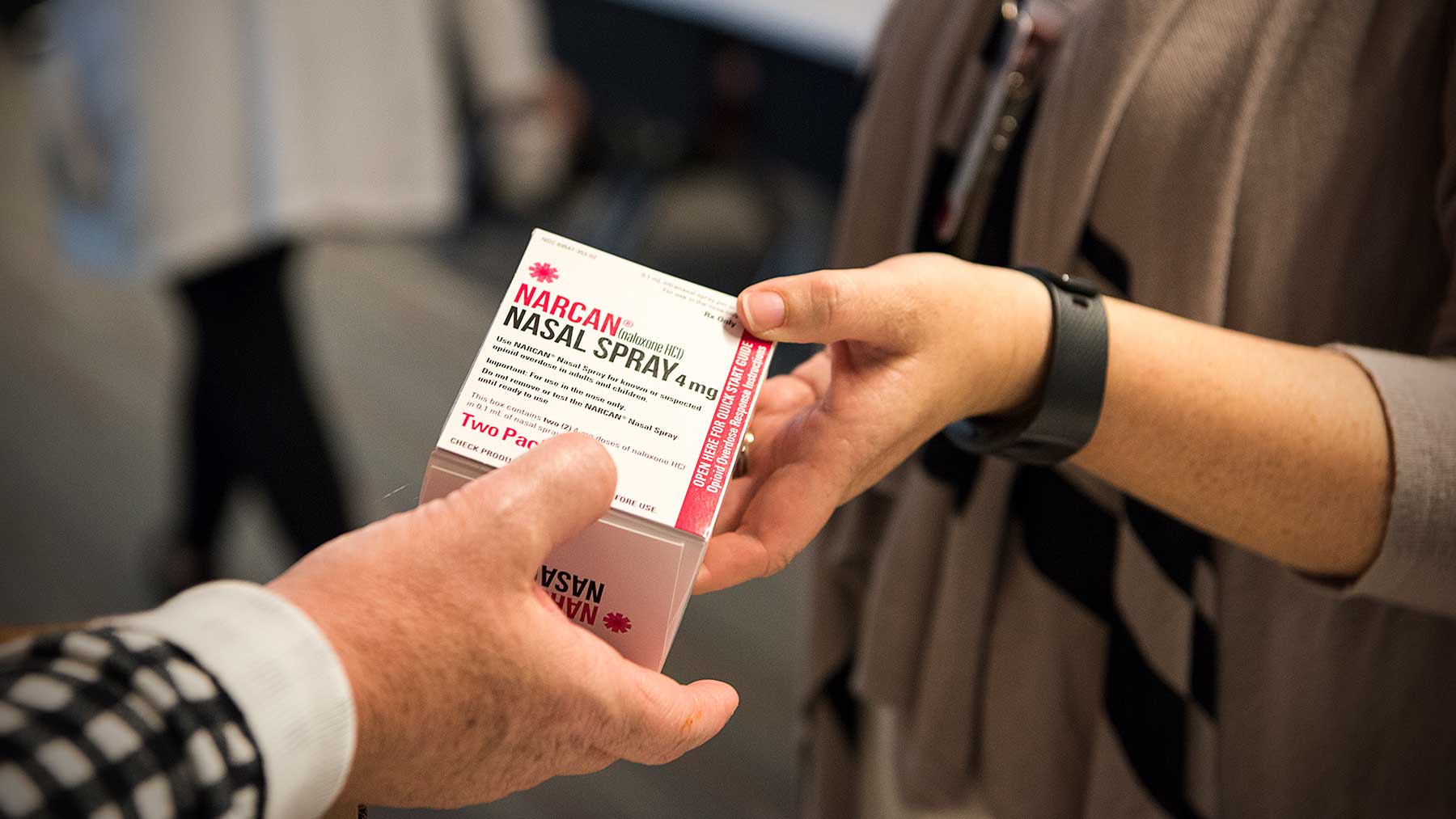Why are overdose deaths surging amid COVID-19?

Editor’s note: As what we know about COVID-19 evolves, so could the information contained in this story. Find our most recent COVID-19 blog posts here, and learn the latest in COVID-19 prevention at the Centers for Disease Control and Prevention.
As the global COVID-19 pandemic continues, opioid overdose deaths are surging nationwide.
This increase in opioid overdose deaths is likely linked to COVID-19 restrictions and closures that have hindered access to treatment and recovery services for those suffering from substance use disorder.
The American Medical Association issued a report stating that it’s “greatly concerned by an increasing number of reports from national, state and local media suggesting increases in opioid-related mortality—particularly from illicitly manufactured fentanyl and fentanyl analogs.”
According to the AMA, more than 35 states—including Ohio—have reported increases in opioid-related mortality, along with ongoing concerns for those with a mental illness or substance use disorder.
In addition, the AMA reports a strong need for evidence-based, harm-reduction services, including sterile needle and syringe services and naloxone.
This issue hits close to home for those of us who treat these substance use disorder patients at The Ohio State University Wexner Medical Center. We’re seeing the problem first-hand: the Franklin County coroner has reported the first four months of 2020 had 50% more overdose deaths than the same period in 2019.
In addition, the coroner reported an alarming 44% increase in overdose deaths among African Americans, which is in line with national trends.
There’s also been a pattern of weekend spikes during COVID-19, according to the Overdose Detection Mapping Application Program (ODMAP).
Who’s most affected?
Young adults are most affected, with death rates doubling over last year. The unintended consequences of social distancing during the COVID-19 outbreak may be behind these increases.
Boredom and loneliness can be triggers for addiction, and additional stressors such as job loss and/or decreased income can contribute to relapse of addictive disorders.
Individuals who haven’t used substances in a while, such as those being released from correctional facilities, are at higher risk for overdose.
In addition, people may be using alone due to social distancing, rather than with someone who could call 911 and administer a Narcan kit that contains naloxone, the opioid-overdose antidote.
The powerful and deadly opioid fentanyl is now commonly being found in other drugs such as cocaine and meth, although people using these substances may not be aware.
How are we helping?
Our team is taking an innovative, proactive approach to this crisis by quickly developing a community-based program to prevent overdose deaths and bring needed resources straight into at-risk neighborhoods.
- Harm-Reduction Tools: Starting in May and continuing into the summer, volunteers have distributed 445 Narcan kits and fentanyl test strips in targeted neighborhoods with high-rates of overdose deaths and documented health disparities, and trained residents to use them. Our team includes members of The Ohio State University departments of pharmacy, nursing, addiction medicine, internal medicine, emergency medicine and the College of Medicine.
- Unique collaboration with public health and emergency medical services: Our targeted distribution of Narcan and fentanyl test strips is part of Operation Recovery, a collaboration of the Wexner Medical Center, Columbus and Franklin County Public Health departments, Southeast Healthcare, and the Rapid Response Emergency Addiction and Crisis Teams (RREACT) of the Columbus Fire and Police departments. Events have been held at food banks, shopping centers and grocery stores with high foot traffic in these underserved neighborhoods.
- Addiction Care: Teams from RREACT also followed up with community members and those with substance use disorder to connect them with treatment providers and agency resources to effectively treat their disease and prevent drug use and overdoses.
We believe that this kind of community support can reduce overdose deaths, and help those who may feel forgotten amid a new public health crisis.
The opioid crisis was already a public health emergency. Now it’s worsened by a pandemic that makes it harder to reach people.
With the COVID-19 outbreak not going away soon, we’re continuing to develop comprehensive addiction care with innovative approaches that work within this ever-changing pandemic environment.
Peggy Williams is an internal medicine physician at The Ohio State University Wexner Medical Center and an assistant professor in The Ohio State University College of Medicine.




